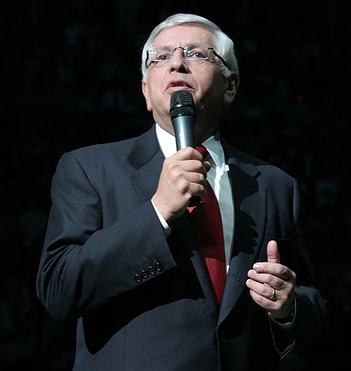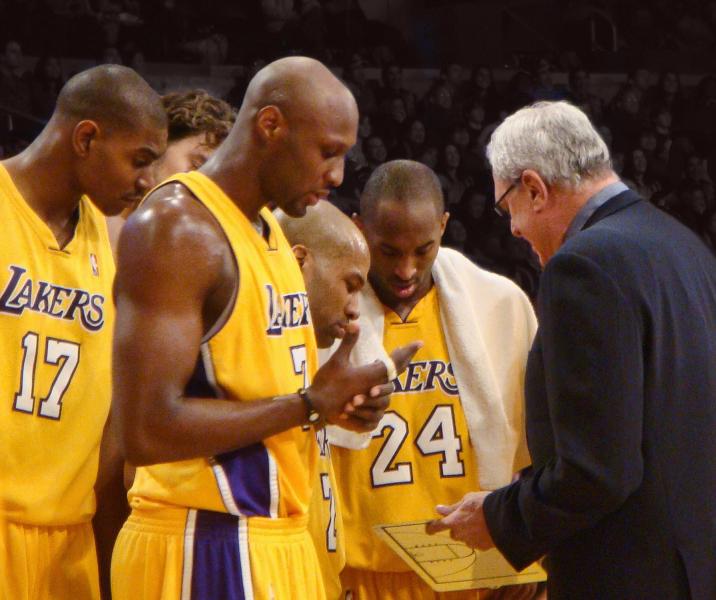2011 NBA Lockout: A Practical Guide

I'm mainly a one-sport man – an NBA man. Sure, I enjoy watching football and baseball every once in a while, but nothing satisfies me more than watching the greatest sport on Earth, basketball.
But as you know, there's a lockout. It seems as if there will be a shortened season, if no season at all. The central issue is how the money will be distributed (isn't that always a problem?), but it's much more complicated than that. According to league reports (which the players disagree with), at least 22 of the 30 franchises did not make a profit last season -- an astoundingly low number.
Who's to blame? The players? The owners? The CBA? Take a look at the central issues of the lockout and we'll let you be the judge.
[Disclaimer: This a general guide to the work stoppage and doesn't include every single detail and/or all of the major issues]
1. Luxury Tax
Old system: The NBA is currently set up with a "soft" cap. Basically, there is a (soft) limit as to how much money each team can spend. However, if a team chooses to do so, they can go over the salary cap number and into the luxury tax. The catch is that if a team decides to go over into the luxury tax, they have to send the league a dollar for every dollar they spend (i.e. if they go over $10 million, they have to give another $10 million to the NBA).
Proposed system: The two sides are discussing a more expensive luxury tax, such as paying two or three dollars to the NBA for every dollar over the cap. Owners hope that this will still limit spending by teams after players vehemently rejected a "hard" cap. In this scenario, no team would be able to spend more than a set amount by the league (thus eliminating the luxury tax). This, in theory, would benefit small-market owners because it would disallow the Lakers, Knicks and Celtics from outspending the rest of the NBA. The players didn't want this – of course – as it would mean their salaries as a whole would be down, and teams with higher salaries would have to eventually strategize a new way to compete.
2. Revenue Sharing

Proposed system: Teams like the Lakers, Mavericks and Bulls (the money-makers) would have to share a percentage of their total revenue with the rest of the league – which would then be divided amongst the rest of the teams. It wouldn't completely balance things out, but would give smaller-market teams more of a competitive edge. Most big market teams are not in support of this system, or if they are, want only a minuscule amount of their profits being shared. This is a huge problem within the owners themselves.
3. Player Contracts
Old system: Currently, almost every single player's contract in the NBA is guaranteed (except second-round draft picks and certain nameless players). If a team signs a player to long-term, lucrative deal, then he starts to struggle (Hey Rashard Lewis!) or underperform (Gilbert Arenas, cough cough), the team is stuck with an albatross contract and nowhere to move the player. Owners hate this. Players, for obvious reasons, support longer, guaranteed deals.
Proposed system: There's a supposed two-part fix. First, contracts wouldn't be guaranteed (it's unlikely the players agree to this, and reports claim that the owners have agreed to guarantee all contracts). Secondly, players' deals would go from a maximum of six years to a max of only three or four, thus allowing teams to get out of bad contracts sooner (and possibly adding more motivation for players as they would have to try harder with more "contract years").
4. A 57/43 revenue split
Old system: Under the current system, players receive a total of 57 percent of the NBA's revenue (with the rest of the 43 percent going to the owners/teams). Therefore, despite all the anger from fans and owners alike that are frustrated over bad player contracts, that money has to go somewhere, which is part of the reason why you see ridiculous deals given to certain players. Whether it is superstars, stars, role players, benchwarmers or rookies, someone has to receive the abundance of money.
Proposed system: This is the trickiest part of the lockout. Originally, reports claimed the two sides were close to accepting a 51/49 or 52/48 split in favor of the players. Nevertheless, the owners' stance has changed drastically, dropping their offer to the players as low as 45 or 46 percent. The latest reports are that the owners offered the players a 50/50 split, with the players rejecting the offer out of a feeling of disrespect (they seem to not want to back down from at least 52 or 53 percent).
____________________________
Reach Jovan by email, or follow him on Twitter.
Best way to find more great content from Neon Tommy?
Or join our email list below to enjoy the weekly Neon Tommy News Highlights.



